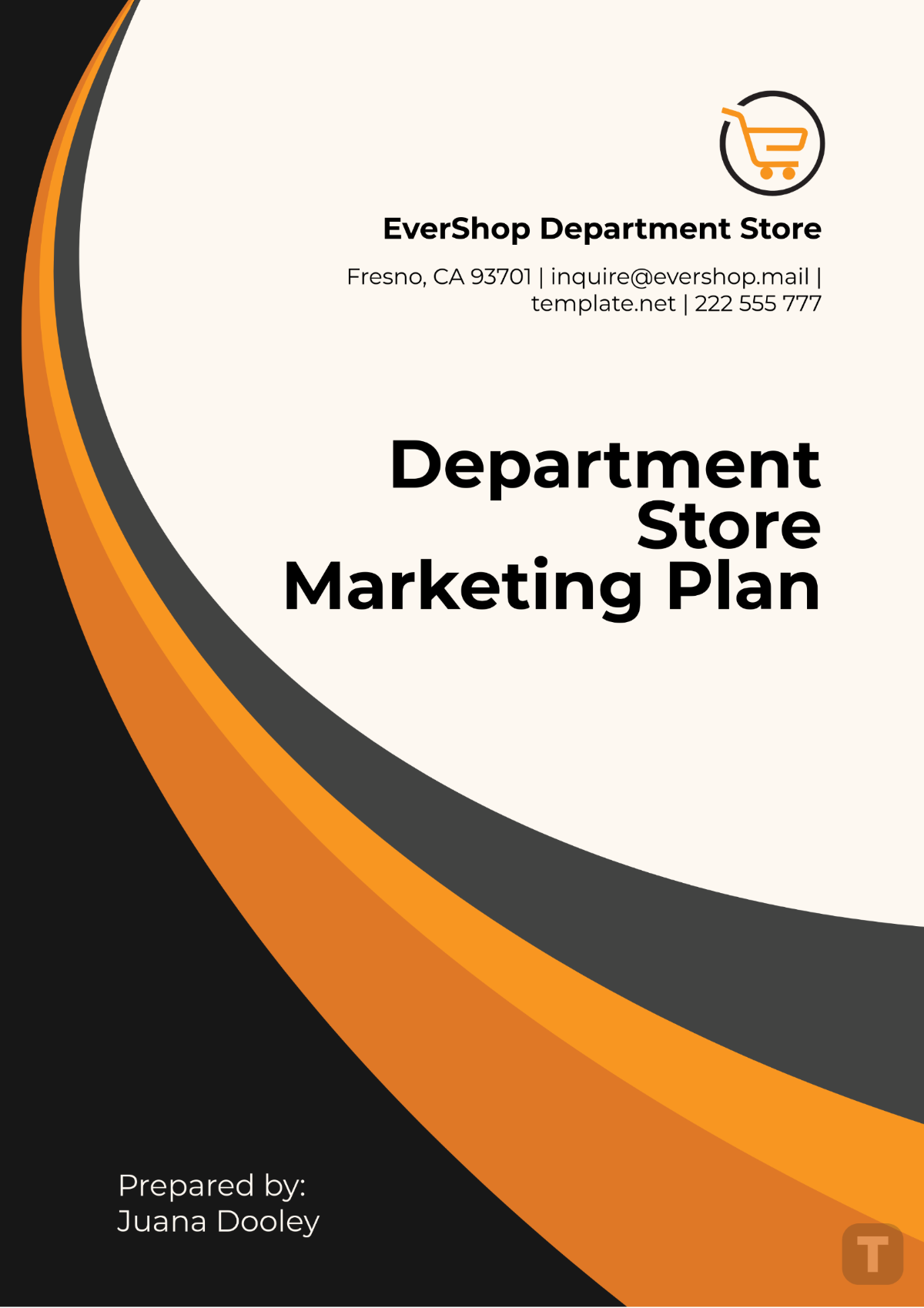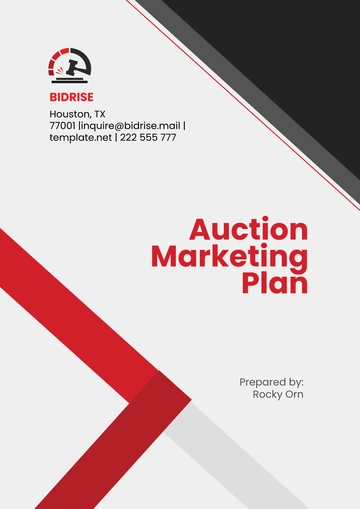Free Department Store Marketing Plan

I. Executive Summary
This marketing plan outlines the strategies and actions that [Your Company Name] will undertake to enhance brand visibility, improve customer engagement, and increase sales over the next 12 months. With a focus on understanding customer preferences and leveraging data-driven insights, we aim to develop targeted marketing campaigns that resonate with our diverse clientele. Our initiatives will include a mix of traditional advertising, digital marketing, and community engagement efforts, ensuring that we effectively reach our target audience across multiple channels. By fostering brand loyalty and trust, we intend to solidify [Your Company Name] as a go-to destination for quality products and exceptional customer service.
To achieve these objectives, our plan includes specific tactics such as social media marketing, email campaigns, and in-store events that create a unique shopping experience. Additionally, we will implement a robust loyalty program to reward our customers and encourage repeat visits. The estimated budget for this marketing plan is aligned with our projected sales growth, ensuring that every dollar spent contributes to our overall success. As we adapt to changing market conditions and consumer behaviors, [Your Company Name] is committed to remaining agile and responsive, positioning ourselves for sustained growth in a competitive retail landscape.
II. Market Analysis
A. Industry Overview
The retail department store sector is undergoing a significant transformation, driven primarily by the rise of online shopping and a growing demand for experiential in-store experiences. According to recent market research, e-commerce sales in the retail sector have surged, prompting traditional department stores to adapt by integrating both physical and digital shopping. This convergence allows consumers to enjoy the convenience of online browsing while retaining the tactile, personal engagement that in-store shopping provides. Furthermore, there is an increasing emphasis on enhancing the customer experience, with many retailers investing in technology and innovative store layouts to attract shoppers. This shift presents both challenges and opportunities for [Your Company Name], as we aim to capture a share of the evolving retail landscape by offering seamless omnichannel experiences that cater to modern consumer preferences.
B. Target Market
Our target market consists of middle to upper-class consumers aged 25-50, primarily focusing on fashion-forward, tech-savvy individuals who value a blend of in-store and online shopping experiences. This demographic tends to prioritize quality, brand reputation, and convenience, often seeking curated product selections that reflect their lifestyle and values. They are also highly influenced by social media trends and are inclined to engage with brands that demonstrate a strong online presence. By understanding the preferences and behaviors of our target market, [Your Company Name] can tailor our marketing strategies to effectively resonate with these consumers and foster brand loyalty.
C. Competitive Analysis
In the competitive landscape, [Your Company Name] faces challenges from both traditional brick-and-mortar department stores and online retail giants. Key competitors include ABC Retail, DEF Stores, and GHI Commerce, each offering unique value propositions that cater to similar consumer bases. ABC Retail is known for its extensive product range and competitive pricing, while DEF Stores has established a strong brand identity through its commitment to sustainability and ethical sourcing. Meanwhile, GHI Commerce dominates the online space with a user-friendly shopping experience and rapid delivery options. To differentiate itself, [Your Company Name] must leverage its strengths, such as personalized customer service and a carefully curated product selection, while actively monitoring competitors' strategies to stay ahead in the market. Understanding these dynamics will enable us to identify growth opportunities and develop effective marketing tactics that position [Your Company Name] as a leader in the retail sector.
III. Marketing Objectives
To ensure sustained growth and competitiveness, [Your Company Name] has established clear marketing objectives for the upcoming year. Focused on driving engagement and sales, these goals aim to enhance both in-store and online experiences. By prioritizing foot traffic, online sales, and brand loyalty, we are committed to creating value for our customers and fostering lasting relationships.
Increase foot traffic by 20% through improved in-store promotions and events.
Boost online sales by 30% by enhancing e-commerce platform and digital marketing.
Enhance brand loyalty with a loyalty program, aiming for a 15% increase in repeat customers.
IV. Marketing Strategies
A. Digital Marketing
1. Social Media Campaigns
Leveraging popular platforms such as Instagram, Facebook, and TikTok, [Your Company Name] will engage customers through interactive contests, user-generated content, and targeted advertising campaigns. By creating shareable content and utilizing influencers, we can increase brand awareness and foster community engagement, effectively reaching our tech-savvy audience.
2. Email Marketing
A segmented email marketing campaign will be implemented to target different customer demographics and preferences. This strategy will promote new product launches, upcoming sales events, and personalized recommendations based on past purchases. By utilizing data analytics, we can refine our messaging to increase open and conversion rates, driving higher engagement.
B. In-Store Promotions
1. Experiential Events
Hosting engaging events such as fashion shows, live demonstrations, and exclusive member-only gatherings will create memorable experiences that encourage customer participation. These events will not only boost foot traffic but also enhance brand loyalty by fostering a sense of community among customers and showcasing [Your Company Name] as a hub for fashion and innovation.
2. Seasonal Sales
Strategic sales promotions will be organized around key holidays and seasonal trends, offering special discounts and limited-time offers to attract shoppers. By planning these sales in advance, we can maximize visibility and create urgency, encouraging customers to visit our stores and shop online during peak shopping periods.
C. E-Commerce Enhancements
1. Website Optimization
To enhance the online shopping experience, [Your Company Name] will focus on improving the website’s user interface, ensuring fast load times and mobile compatibility. By creating a seamless, user-friendly environment, we can reduce bounce rates and increase conversions, ultimately driving online sales.
2. Omni-Channel Integration
Ensuring a seamless integration between online and offline shopping experiences is crucial. We will implement services such as buy online, pick up in-store (BOPIS), allowing customers to conveniently shop online while enjoying the immediacy of in-store pick-up. This approach not only enhances customer satisfaction but also encourages additional in-store purchases.
V. Budget Allocation
Effective budget allocation is critical for the successful execution of our marketing strategies at [Your Company Name]. The following breakdown highlights the financial resources dedicated to various marketing activities, ensuring a balanced investment across digital marketing, in-store promotions, e-commerce enhancements, and miscellaneous expenses. This strategic approach will optimize our efforts and drive measurable results in the upcoming year.
Activity | Budget ($) | Percentage |
|---|---|---|
Digital Marketing | 100,000 | 40% |
In-Store Promotions | 50,000 | 20% |
E-Commerce Enhancements | 75,000 | 30% |
Miscellaneous | 25,000 | 10% |
VI. Performance Tracking and Metrics
To measure the effectiveness of our marketing strategies, [Your Company Name] will establish key performance indicators (KPIs) that provide valuable insights into our progress. By employing monitoring tools, we can analyze performance data, enabling informed decision-making and adjustments to optimize our marketing efforts throughout the year.
A. Key Performance Indicators (KPIs)
Sales Growth Rate
Customer Acquisition Cost
Customer Retention Rate
Website Traffic and Conversion Rate
B. Monitoring Tools
Utilize tools such as Google Analytics, CRM software, and social media insights to track and analyze performance data.
VII. Conclusion
This marketing plan establishes a comprehensive approach for [Your Company Name] to adapt to the evolving market dynamics and leverage both online and offline opportunities to drive growth. As consumer preferences shift towards a more integrated shopping experience, our strategies are designed to meet these demands while enhancing brand visibility and customer engagement. By focusing on targeted digital marketing campaigns, engaging in-store promotions, and seamless e-commerce enhancements, we position ourselves to capture the attention of our target market and foster lasting relationships with our customers.
Moreover, our commitment to performance tracking ensures that we remain agile and responsive to changing trends and consumer behaviors. By closely monitoring key performance indicators and utilizing advanced analytics tools, [Your Company Name] can make data-driven decisions that optimize our marketing efforts and drive sustained growth. As we move forward, we are confident that this strategic marketing plan will not only enhance our competitive advantage but also solidify our reputation as a leading department store that prioritizes customer satisfaction and innovation. Together, these initiatives will pave the way for a successful year ahead, reinforcing our mission to provide exceptional products and experiences for our valued customers.
- 100% Customizable, free editor
- Access 1 Million+ Templates, photo’s & graphics
- Download or share as a template
- Click and replace photos, graphics, text, backgrounds
- Resize, crop, AI write & more
- Access advanced editor
Elevate your retail strategy with our Department Store Marketing Plan Template. This customizable and editable template helps you outline effective marketing strategies for your store. Fully editable in our Ai Editor Tool, you can adjust every detail to align with your goals, ensuring a successful marketing approach at Template.net.





























